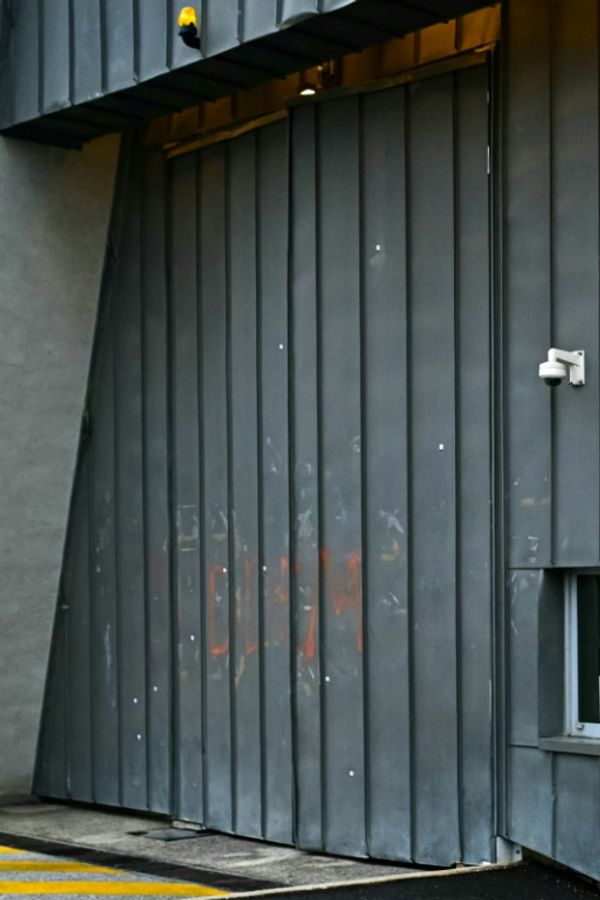
When tenants moved into 43 brand new apartments at a building in Melbourne’s inner north 12 months ago, some thought they would be there for years. The apartments at 221 Kerr Street, Fitzroy, were marketed as setting “a new standard for apartments in the suburb”. There was a competitive application process, with some prospective tenants asked to send in biographies explaining why they should live there.
A year later, some residents claim about one-third of the building has received either notices to vacate or rent increases. Of the 43 apartments, a group of residents claim the tenants of seven apartments have received notices to vacate and eight have received rent increases of between 9% and 17%.
“We’re being evicted in the middle of a housing crisis,” says Ella, who did not want her real name published and who has to move out along with her housemate.
“The vacancy rate in the inner north of Melbourne is like 0.9%. There’s no conversation about why it’s happening to some and not others.”
In desperation, a group of tenants, including people from dwellings the collective says are being forced out, wrote to The Apartment Specialists, which manages the building, saying the “differing treatment” was “unsettling and deeply concerning”.
“While we recognise the need to respond to market trends, we encourage a more tenant-centric approach that values long-term community stability,” the letter reads. “As such, we kindly request the possibility for tenants to negotiate rental increases and notices to vacate.” They say they did not get a reply.
The Apartment Specialists did not provide a response to questions despite several requests from Guardian Australia.
Housing advocates argue the situation raises concerns about corporate landlords and shows there are holes in Victoria’s landmark rental reforms of 2021.
While the government said the suite of reforms included a law change to ensure “no eviction without a reason”, landlords can still issue a notice to vacate at the end of the initial fixed term. All of the tenants were signed on to a 12-month lease, leaving them with no legal recourse to fight to stay.
Some residents also claim the Kerr Street development was pitched as “build-to-rent”, a model often touted as a key answer to the rental crisis.
Three of the apartments in the building are now being advertised to rent. Tenants say they have been ignored by The Apartment Specialists after asking if they could move into one of the other places.
Guardian Australia has spoken to tenants across six apartments who have received notices to vacate and one more who received a rent hike. All say there was no communication about why some were able to continue living there at the initial lease price, while some got rent hikes and others were being forced to leave.
A letter for one apartment, sent by an employee at The Apartment Specialists, reads: “I have decided not to extend this agreement and am giving you notice to vacate the premises at the end of the initial fixed term.”
Ella says she was at the building’s book club in September when one of the tenants said they were being kicked out.
“From that point, it was just sort of one after another,” Ella says, as affected tenants received letters telling them they would need to leave or pay more to stay.
“My direct neighbour, we have the same apartment. Two bedrooms, same layout, but we’ve been vacated and he has a rent increase,” Ella says.
Another resident, Nicole, who did not want her real name published, claims the building was “pitched as a build-to-rent model”.
“On [a real estate website], they had written it was a build-to-rent model. They wanted it to be long-term – that was what we all signed up for,” Nicole says. “There was no room to negotiate, it was just that you’re asked to leave.”
Build-to-rent models have been touted as a key answer to the rental crisis. The Victorian government said in a press release in June that they offer “high-quality and well-maintained homes on secure leases”.
Michael Fotheringham, the director of the Australian Housing and Urban Research Institute, says the number of corporate landlords is increasing and should “in theory’” offer more stability to tenants.
“Institutional investors behave slightly differently [to small-scale investors], in that they’re more focused on rental yield and the longer term, and therefore tend to be more friendly to longer leases,” he says. “And because they’re often partners in the development of sites, [the buildings are] often higher quality.”
But because corporate landlords are “regulated exactly as well as small-scale investors”, there is no more protection for renters that would ensure “a guarantee of good behaviour”, Fotheringham says.
The executive director of advocacy organisation Better Renting, Joel Dignam, says Victoria should pull itself into line with the ACT and expand its rental protections to also ban no-grounds evictions after the first 12 months of a lease.
“[Forcing people out of a rental is] really hard to justify for a corporate landlord,” Dignam says. “They’re clearly not moving in, they’re not selling the property.”
Though she says there was no explanation given for the notice to vacate, Ella initially believed her lease was ending because she had been “more vocal” about issues with the building. But she says she was told another tenant who had never complained was also among those being forced out.
Dignam argues that if 50 people started a job at a supermarket, and one year later 10 of them lost their jobs, 10 were given a pay cut and the others were left alone with no explanation, it would not be accepted.
“If you got into a build-to-rent 12 months ago, you would have a reasonable perception of not being kicked out 12 months later,” Dignam says.
Ella agrees. “It’s really confusing and obviously upsetting,” she says. “We literally moved in at the end of last year thinking, ‘Great, this will be it for a few years’.”







